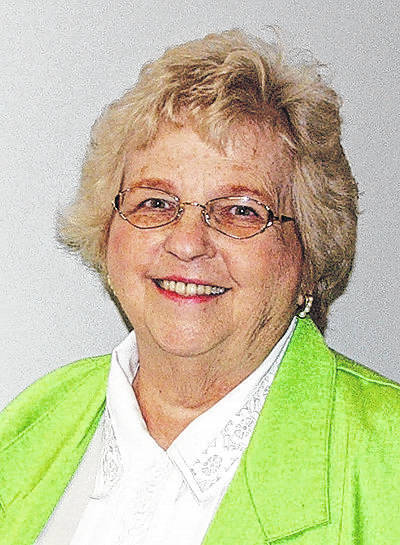
Lately Wright-Patterson has been in the news via the Museum of the United States Air Force. The long-awaited exhibit of the World War II plane known as the Memphis Belle has a permanent place in our area and will attract many visitors. When these visitors arrive, they will also learn about Wright-Patterson Air Force Base and its long and interesting history.
Perhaps it all began with the Greek legend of Daedalus and Icarus who attempted to escape from Crete by fashioning wings of feathers and wax. Icarus was instructed not to fly too close to the sun, but being young, he disobeyed, the wings melted and he fell into the ocean. The dream of man flying has been around for centuries, but not until Wilbur and Orville Wright accomplished the feat did the dream of man soaring through the air become a reality.
The history of the base actually goes back to the time when Wilbur and Orville Wright first began to fly their new invention.
Granted, they got it off the ground at Kitty-Hawk, where the winds were more favorable, but the real test of flying came when they returned to Ohio with their invention, and thus perfected flight.
Huffman Prairie was the place selected for their early experiments. This was a relatively open area with access from the interurban, making it easier to come and go. A few people were aware of the experiments, but most just ignored them.
Fred Marshall, who became one of their most ardent admirers, ignored them for quite some time. However, as they learned more about controlled flight, the novelty of a “flying machine” became more interesting to the general public.
A report in the newspaper of May 26, 1904 contained the following information. Orville got on the plane which was 21 feet long. It was moved on a monorail to a speed of 25 mph and soared into the air eight feet for a distance of 25 feet then fell.
Such were the trials and tribulations of perfecting the airplane. As they perfected the flyer, from 1910 to 1916, they utilized the Huffman area for the Wright Company School of Aviation.
After the US Army became interested in purchasing the planes, Wilbur Wright Field, now a part of Wright-Patterson was established. Wright Field included the Huffman Prairie land and was adjacent to the Fairfield Aviation General Supply Depot
The Army was anxious to get the planes in the air during World War I and so Wright Field offered a flight training school for prospective pilots. General Henry “Hap” Arnold was one of those early students.
Students took classes on military studies, gunnery and radio in the classroom for part of the day, with the remainder of the day learning to fly.
Following WWI, it was determined that air flight could be advantageous and so the Army continued to improve and test the newest aircraft.
With this encouragement, some folks realized that this could be a major contribution to the area and under the guidance of the Patterson family of Dayton (National Cash Register Company) a fund was set up to purchase additional property. The government was willing to accept the proposal provided that the land would be donated to the government.
In only two days, $425,000 was acquired through private funding to purchase the land and fund a monument to the Wright Brothers. The property acquired included the original Huffman Prairie land. The deed was presented to President Coolidge in 1924 and the site was known as Wright Field to honor both the brothers.
In 1931, consideration was given to recognize the accomplishments of the Patterson family’s leadership in keeping the Engineering Division in the Dayton area.
Lt. Frank Stuart Patterson, born in Dayton, was a son and nephew of the National Cash Register Patterson family. He attended Yale University and upon completion of his studies, became a test pilot for the Army. He was a 1st Lieutenant in the Officers Reserve Corps, a member of the 137th Aero Squadron at Wright Field.
June 19, 1918 he and his observer took the plane into the air to test synchronizing the machine gun and the propeller so that the gun would fire between the propellers blades while in flight. The test was successful however during a dive of 1500 feet, the wings separated from the aircraft and he and his companion were killed.
To honor his accomplishments, and those of his family in the field of aviation, Patterson Field was named.
The base continued to be a vital part of the training of pilots for the Army Air Corp. When WWII broke out, more and more buildings were constructed on the two sites and personnel were increased. Both Patterson and Wright Fields were vital to the war effort, providing pilots and supplies.
In 1945, it was decided that the two units should become one Air Force Base and so the facilities combined became known as Wright-Patterson Air Force Base.
Over the years, many of the astronauts who have traveled in space were first test pilots at Wright-Patterson, which continues to be a vital part of the United States Air Force.


